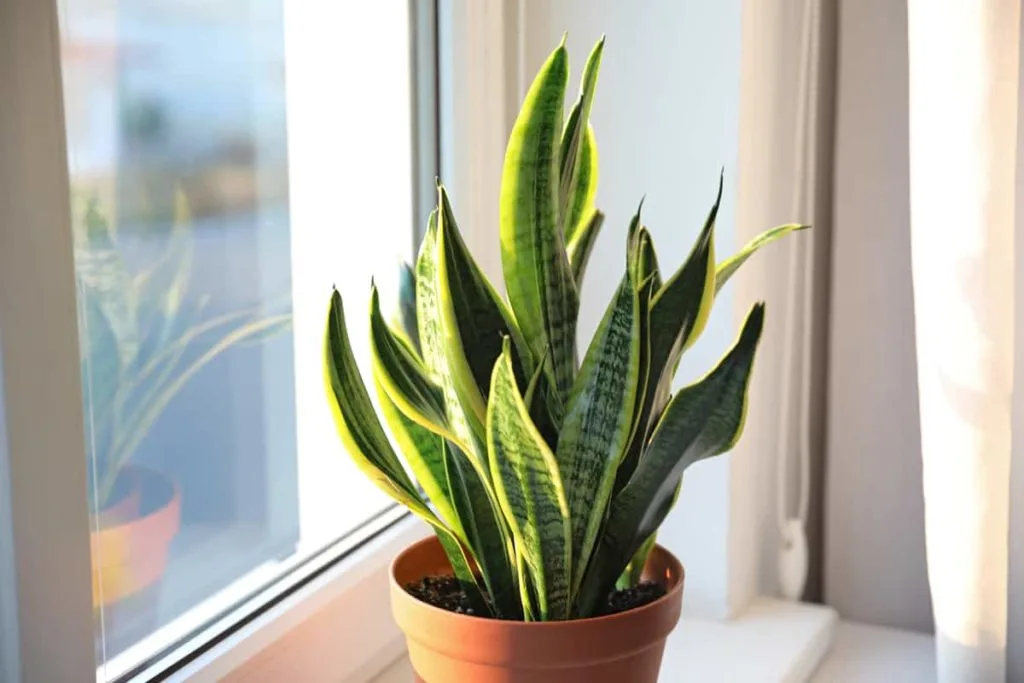
Sansevieria, more commonly known as snake plants or mother-in-law’s tongue, has become a staple indoor plant.
Snake plants’ allure comes from their sharp, structural leaves, with some edged in yellow or streaked with jagged lines. Part of the charm is their laid-back nature and ability to survive most indoor and outdoor conditions.
The most unique thing about the snake plant isn’t its striking looks, but rather its stunning but elusive flower. Yes, snake plants can and do bloom.
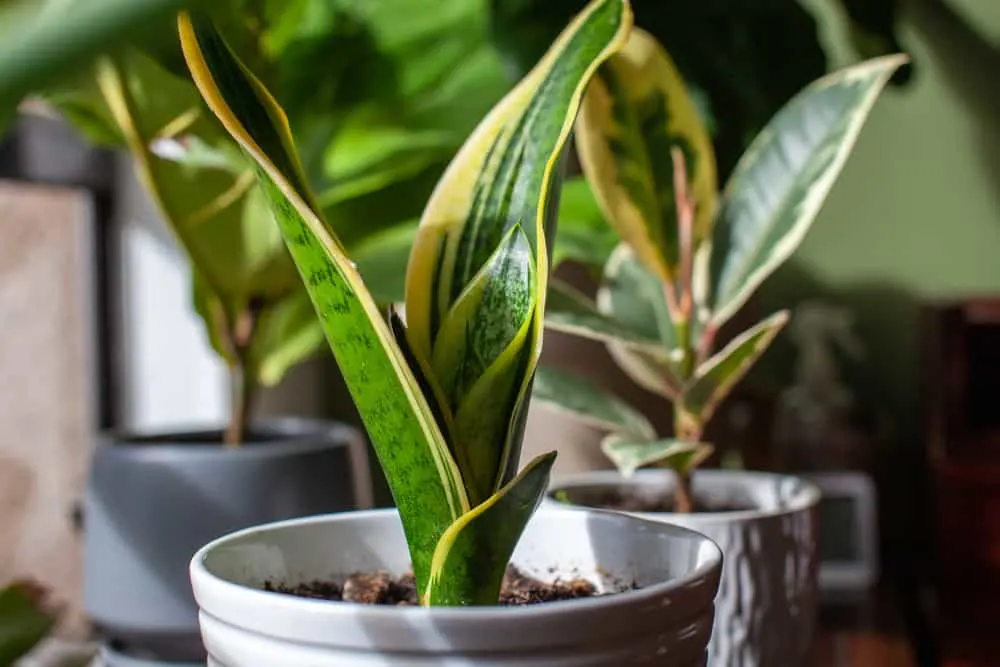
The event is so rare, however, that owners will likely never see their snake plant sprout a delicate white flower. Some varieties don’t bloom at all.
If you’ve got a blooming variety, you might wake up one day to a flower amongst the leaves of your snake plant. But if you want to coax out a flower yourself, there are a few ways to help your snake plant produce its mysterious blooms.
Related Reading: 10 Common Snake Plant Problems & How To Fix Them
The Snake Plant Flower
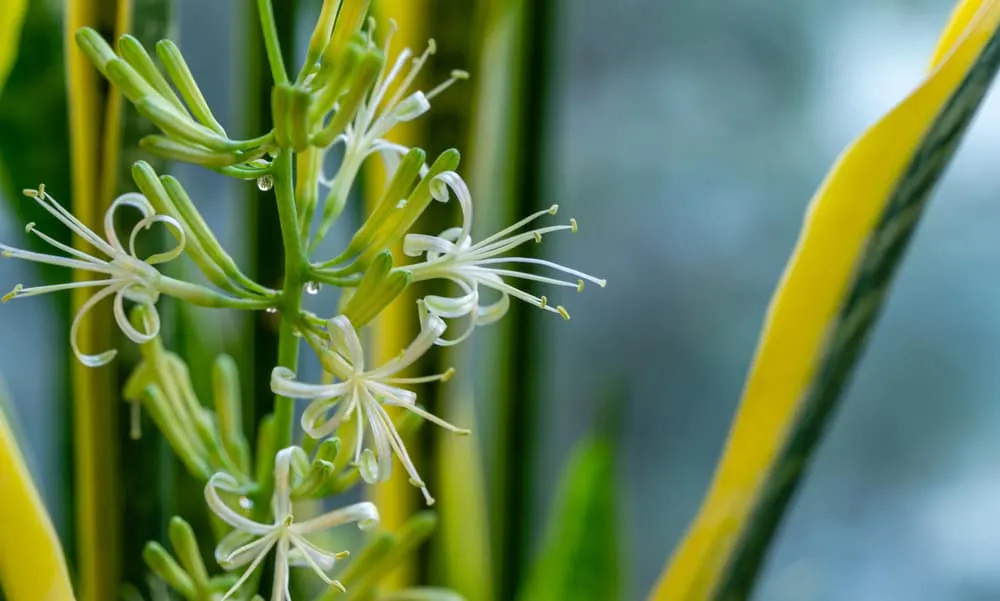
On the exceptionally rare occasion that your snake plant flowers, you’ll see small buds scattered along a long flowering stalk. This stalk can reach a height of around three feet, sometimes towering over the tips of the snake plant leaves. Snake plants won’t typically have more than one stalk.
These stalks carry dozens of small tubular flowers which grow in clusters and have thin petals. These petite flowers most resemble honeysuckle or small lily flowers. Some varieties don’t sprout stalks. Instead, their flowers bloom in large clusters at the base of the plant.
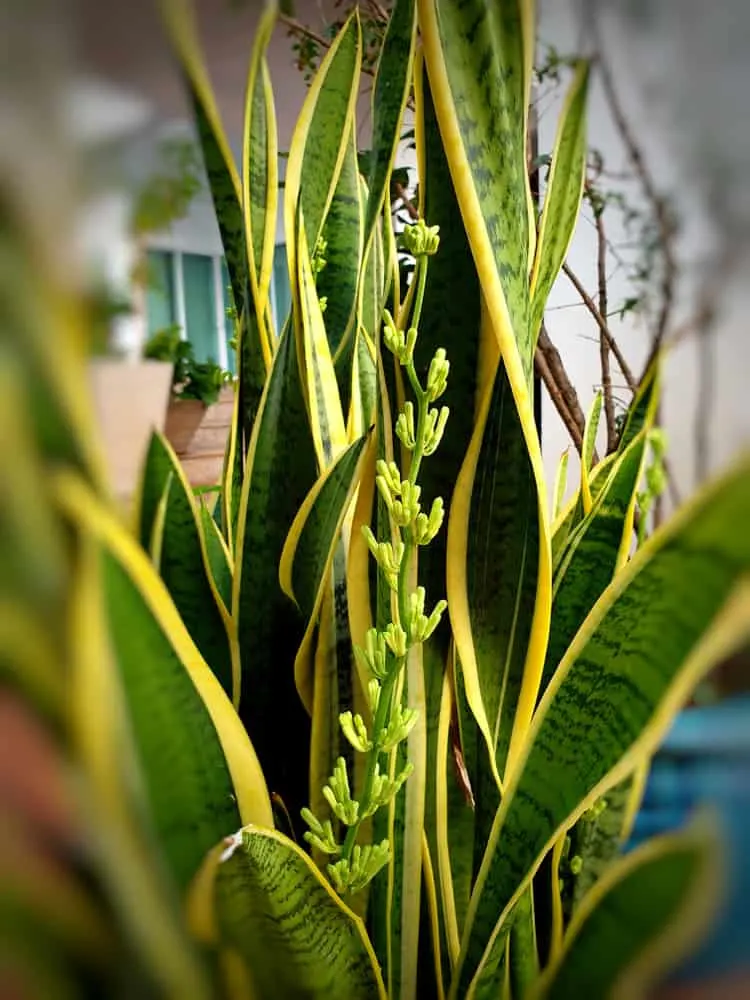
Different varieties of snake plants also sport different colored flowers. Typically, these colors range from white or cream to greenish-white or even yellow. The flowers are a stunning display, especially against the contrasting leaves of the snake plant.
While the flowers may be rare, when they bloom, they make themselves known with their striking beauty and strong aroma.
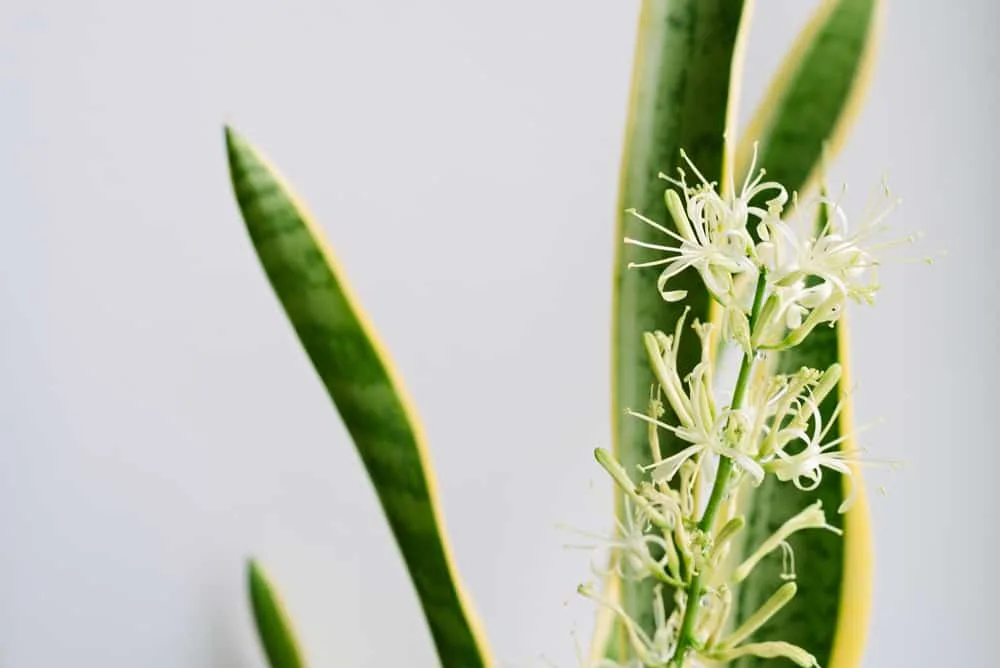
When snake plants bloom, they’ll only do so once a year, usually in spring. The flowers last a few weeks and can develop berries as the flowers begin to die back.
Fortunately, snake plants won’t die once they’ve flowered. Instead, new flowering stalks may appear annually to treat you with their stunning flowers.
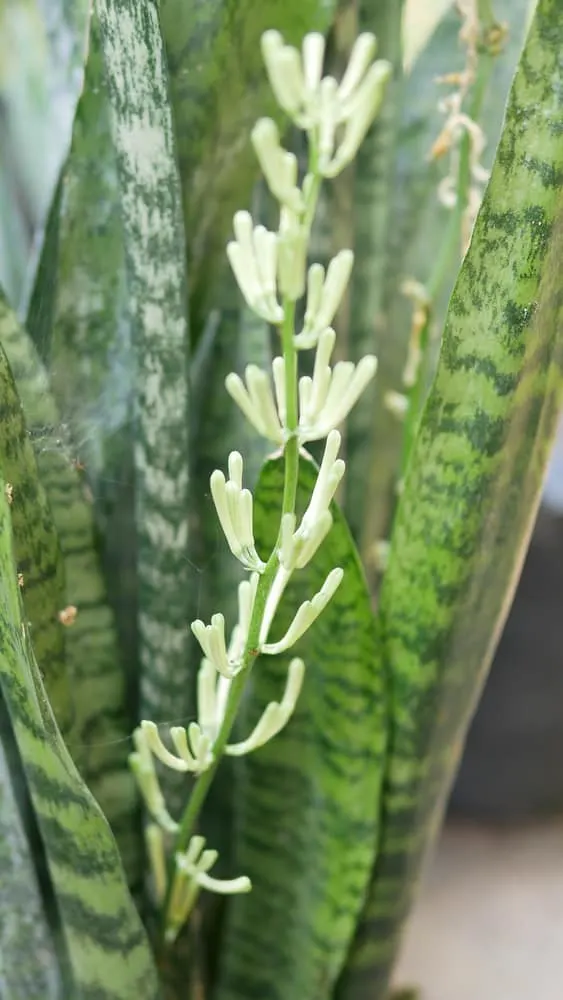
Now that you know all about the flowers, you must be itching to trick your snake plant into blooming.
The reality is no one knows exactly how to make the snake plant flower. Several factors come into play, such as the age of the plant. Sometimes, snake plants only flower when just their basic needs are met, and can be tricked into flowering with a bit of neglect.
Related Reading: How To Repot A Snake Plant (& 5 Signs You Need To)
How to Make Your Snake Plant Flower
Light
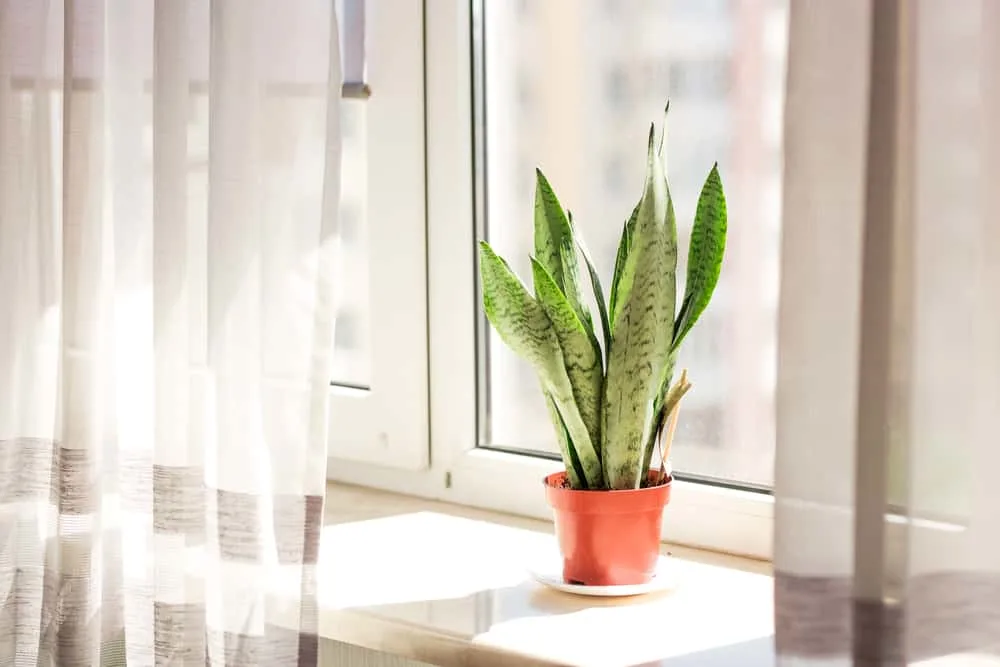
Snake plants are notoriously easy-going plants, thriving under the care of even the most neglectful plant parents. Typically, snake plants grow in various lighting conditions, including full sun and shade.
But, snake plants prefer a constant stream of indirect sunlight. As gardeners know, producing flowers requires a lot of energy, and that energy comes from light.
To increase the chances of it blooming, pull your snake plant out from the dark corners of your home. Rather place it in front of a sheer curtained window where it gets plenty of bright light throughout the day.
Water
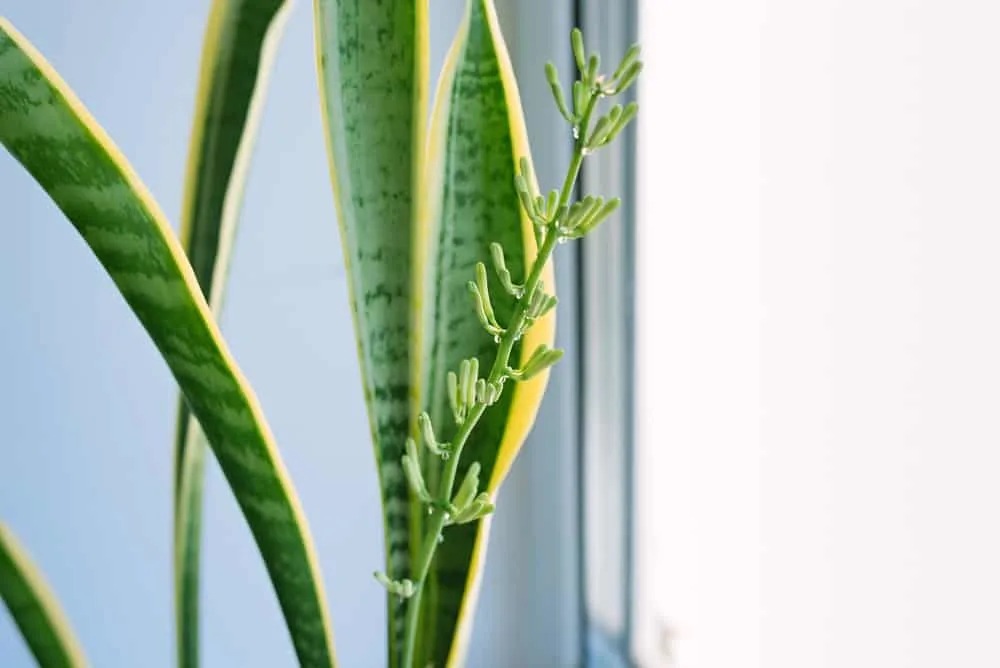
Snake plants need very little water to thrive. They are considered semi-succulent plants as they can store water within their leaves, so their water requirements are quite low.
Snake plants also hate wet feet and prefer dry soil over soggy or moist soil. Overwatering can cause the leaves to split and rot. With that said, extended periods of drought can be also detrimental.
It’s best to water snake plants only when the soil is dry to the touch. Depending on temperature and climate, this can be as little as twice a month. During winter you need to water your snake plant even less.
Many believe that as long as snake plants’ light requirements are met, they’ll bloom if they experience some stress. Some suggest that watering as little as possible stresses the snake plant out enough to bloom. If you’re happy to risk other potential issues caused by underwatering, you can give this trick a go.
Soil and Nutrients
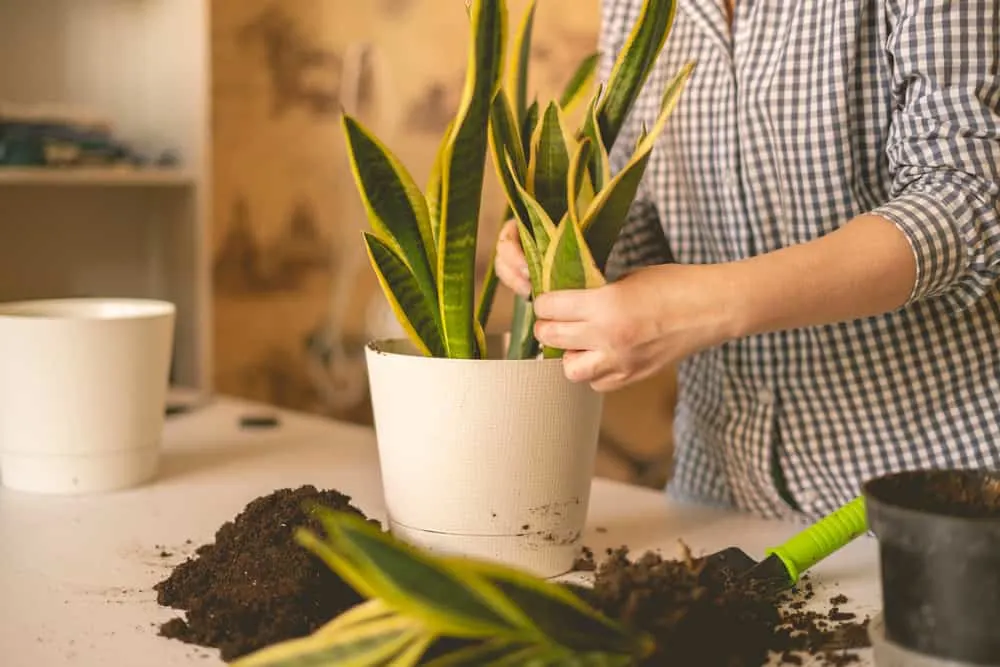
Snake plant soil should be very light and well-draining. As mentioned, snake plants can develop root rot if the soil becomes too bogged down with water. Improving your soil’s drainage and aeration is as simple as adding some river sand into your potting mix.
Snake plants typically don’t require any added nutrients to flourish. But, the sprinkling of a high phosphorus fertilizer may boost the chances of your snake plant flowering. Don’t use too much, as this can cause a nutrient imbalance in the soil that will impact growth negatively.
Temperature
Snake plants are native to West Africa and prefer tropical-like conditions. They thrive best in USDA zones 9 – 11. Outdoor snake plants will need to be overwintered indoors as they won’t survive temperatures lower than 50F.
While some stress may help your snake plant bloom, exposing it to drafts and freezing temperatures is detrimental. Higher temperatures or less water are far safer options that will not instantly kill your plant and can potentially be rectified later on if the damage is not excessive.
Age
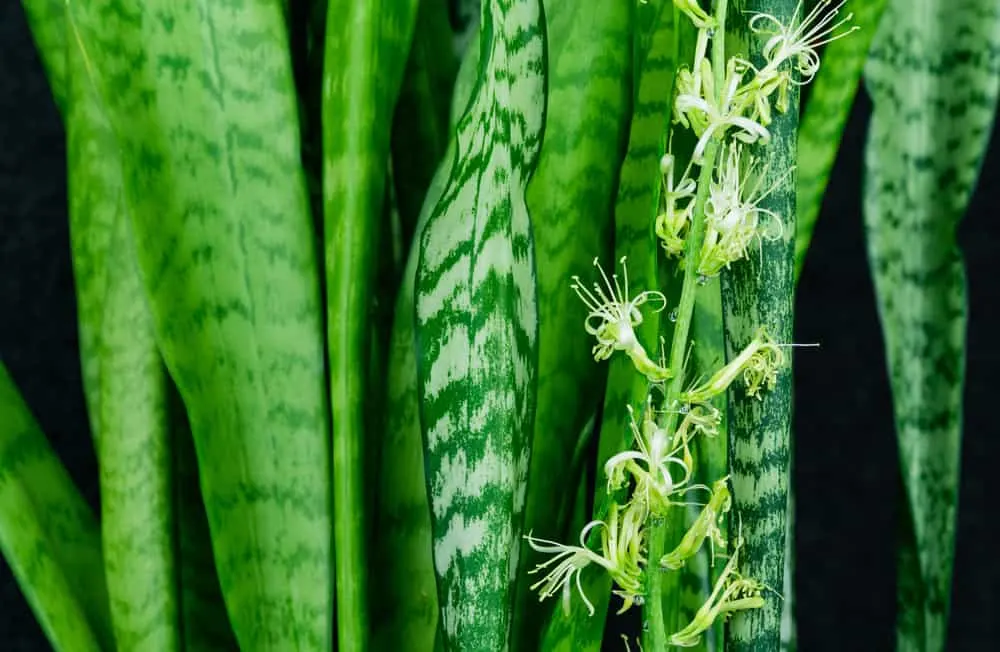
The age of the plant plays a large role in when and if your snake plant flowers. Sometimes, younger plants can bloom, but this is extremely rare.
Older more established plants have a higher chance of producing blooms under the right conditions.
Established plants also are more prone to become root or pot-bound, which increases the stress of the plant. When snake plants are exposed to enough light but are neglected, they tend to take up the available space in the pot and more. The reduced space causes the snake plant to shift its energy away from producing leaves to producing blooms.
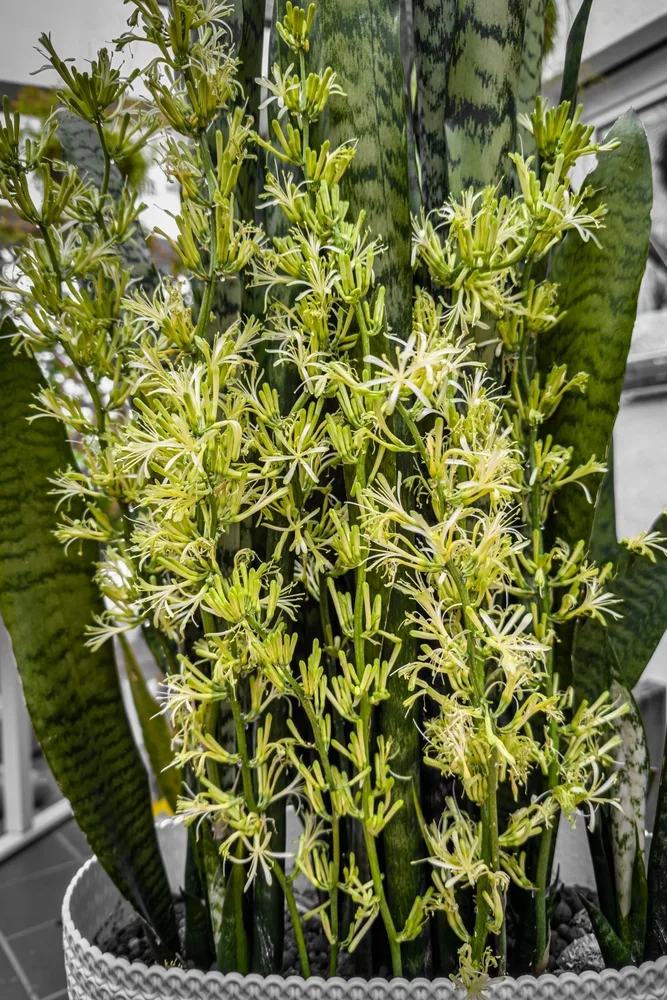
Snake plant flowers are so rare, not many know the plant even blooms. These flowers sometimes appear out of nowhere or for no reason.
Snake plants require little care to thrive, and some even theorize that neglect helps the plant bloom. Ultimately, patience and meeting this plant’s light needs, with a bit of healthy stress added in, can result in the sweet, elusive white blooms.
Keep in mind that these flowers have a strong aroma and produce thick, sticky nectar. This nectar tends to attract pests and can cause quite a mess. Other than that, these rare blooms are a true treat when and if your snake plant decides to flower.

